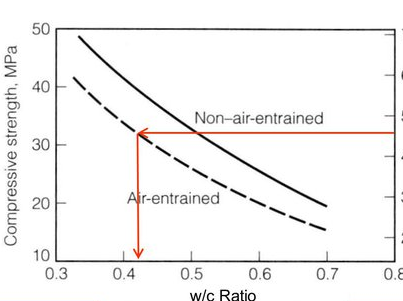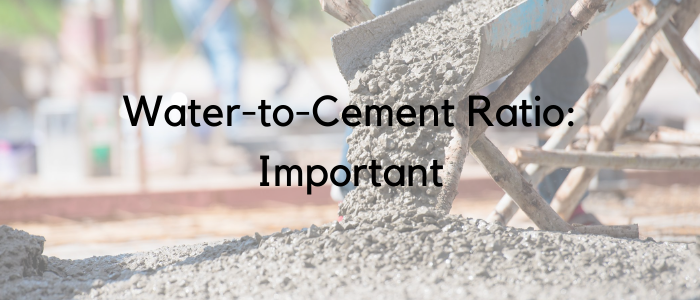If you are working with concrete, you may be then familiar with the term “Water-to-Cement Ratio”, or sometimes called “water-to-binder ratio” or “water-to-cementitious materials ratio”. If not or you are interested in what these terms mean and how they relate to concrete, please, follow along.
Let’s start by saying that the concept of water-cement ratio is universal, which is used as a measurement or indicator for the strength characteristics and durability of concrete.
What is Water-to-Cement Ratio (w/c)?
Simply, the water to cement ratio (w/c) is the ratio of the mass of water to the mass of cement in a certain mixture.
w/c = mass of water (kg/m3) / mass of cement (kg/m3)
In case there are other binders than cement, w/c turns to be called “water-to-binder ratio (w/b)” or “water-to-cementitious materials ratio (w/cm)”. For example, when the binder consists of cement + fly ash or cement + slag, w/b = mass of water (kg/m3) / [mass of cement (kg/m3) + mass of other binders (kg/m3)].
For normal concrete mixtures, the water-to-cementitious materials ratio typically ranges between 0.4 to 0.6.
Effect of Water-to-Cement Ratio
Strength
One of the most important properties of concrete that is directly related to w/c is strength (either compressive, tensile, or flexural). Higher amount of water in the mixture will lead to lower values of strength

Why?
Because increasing the w/c will lead to higher porosity of concrete which means less solid material in the same volume available for resisting the load. Thus, leading to earlier failure.
Durability
Durability of concrete can be interpreted as the ability of concrete to resist the actions imposed by the surrounding environment such as corrosion, chemical attack, weathering, etc. Different types of concrete require varying levels of durability, based on the exposure environment and intended qualities.
Water-to-cement ratio has a significant effect on the durability of concrete. The lower w/c will reduce the porosity of the concrete and results in lower permeability. This means higher resistance to the ingress of detrimental substances from outside and thus, higher durability.

There are multiple types of pores in concrete such as gel pores and capillary pores. It is capillary pores that what we usually speak of when talking about porosity. Capillary pores are the one the might cause durability problems.
Generally, the capillary pores depends on the w/c ratio and lower w/c ratio will decrease the capillary porosity of the concrete. In low w/c ratio, the concrete particles come closer to each other and reduce the free spaces inside the concrete. As a result, less outer products will be formed and therefore the capillary porosity of the paste will be reduced.
In addition, the higher concrete strength will develop more resistance to the internal stresses and limit the cracking in the concrete that might be generated through expansive reaction of contaminated agents.
How to determine Water-to-Cement Ratio
Codes and specifications recommend the maximum values for the w/c depending of the strength requirements and exposure conditions
Read Also:
